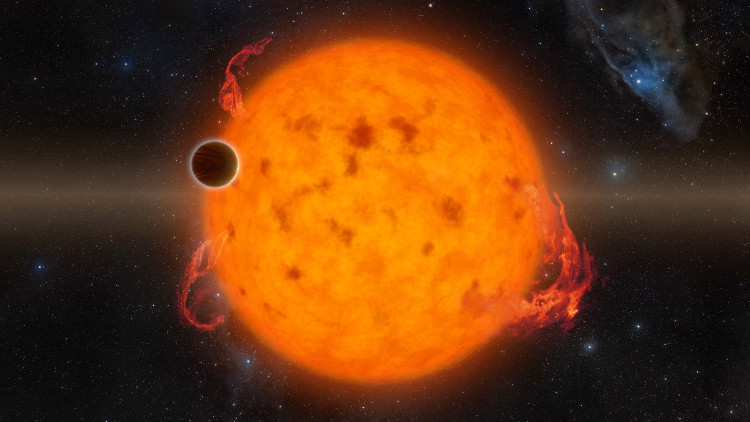The star 'eats' the planets in the system
American scientists discovered the sign of a star in the binary system separated by 320 light-years Earth "eat" the planets around it.
The star HD 240430 is part of the binary system along with HD 240429 , New Scientist on September 21 reported. The researchers nicknamed the two stars, Kronos and Krios respectively . The pair of stars moves through the galaxy at 320 light-years from Earth.
Both stars seem to be about 4 billion years old, indicating that they were born from the same star cloud, and initially shared the chemical composition. But an analysis of Semyeong Oh researcher at Princeton University, USA, and colleagues showed that twin stars have very different lives. Krios has a lower density of elements of lithium, magnesium and iron floating in the atmosphere than their twins Kronos.

Illustration of Kronos star.(Photo: NASA).
In fact, this star system has a different chemical composition than every pair of stars ever discovered . " At first, I meant the two stars could not be in binary , " Oh said. They may not be born together but will be attracted to each other later. Maybe the star cloud gave them a density of different elements.
However, Oh's group put the theory that Kronos swallowed some of the rocky planets around during its lifetime. Therefore, they called the star Kronos, following the Greek mythological giant who ate his own children for fear they would overthrow him. They also assigned HD 240429 nicknames Krios, Kronos's less famous brother.
The researchers calculated an amount of chemical elements equivalent to 15 Earths scattered in the Kronos atmosphere to create the star-rich structure of the star."I'm really excited to observe this star. Many signs are small but this is a big sign , " said researcher Johanna Teske at Carnegie Observatory in Pasadena, California, USA.
The team is not sure how the star is eating its planets. It is possible that another star passed by affecting the orbit of some outer planets orbiting Kronos, deflecting the planets' movement in the inner ring, causing them to tilt toward the star.
- Planets in the Solar System
- Does life exist in a binary star system?
- Discover the planet's most planetary star
- Sun copies 'eat' many planets in the system
- Why does the star system have 3 super new Earth?
- Not only the 9th planet, the solar system can own the 10th and 11th planets
- Found the Solar System miniature
- Space Science: The order of 8 (or 9) planets in the Solar System
- The mysterious planet causes the orbiting star to age
- Unknown mystery about planets outside the solar system
- The star planets TRAPPIST-1 could not survive
- Discover a new planet like the strange Earth
 Van Allen's belt and evidence that the Apollo 11 mission to the Moon was myth
Van Allen's belt and evidence that the Apollo 11 mission to the Moon was myth The levels of civilization in the universe (Kardashev scale)
The levels of civilization in the universe (Kardashev scale) Today Mars, the sun and the Earth are aligned
Today Mars, the sun and the Earth are aligned The Amazon owner announced a secret plan to build a space base for thousands of people
The Amazon owner announced a secret plan to build a space base for thousands of people